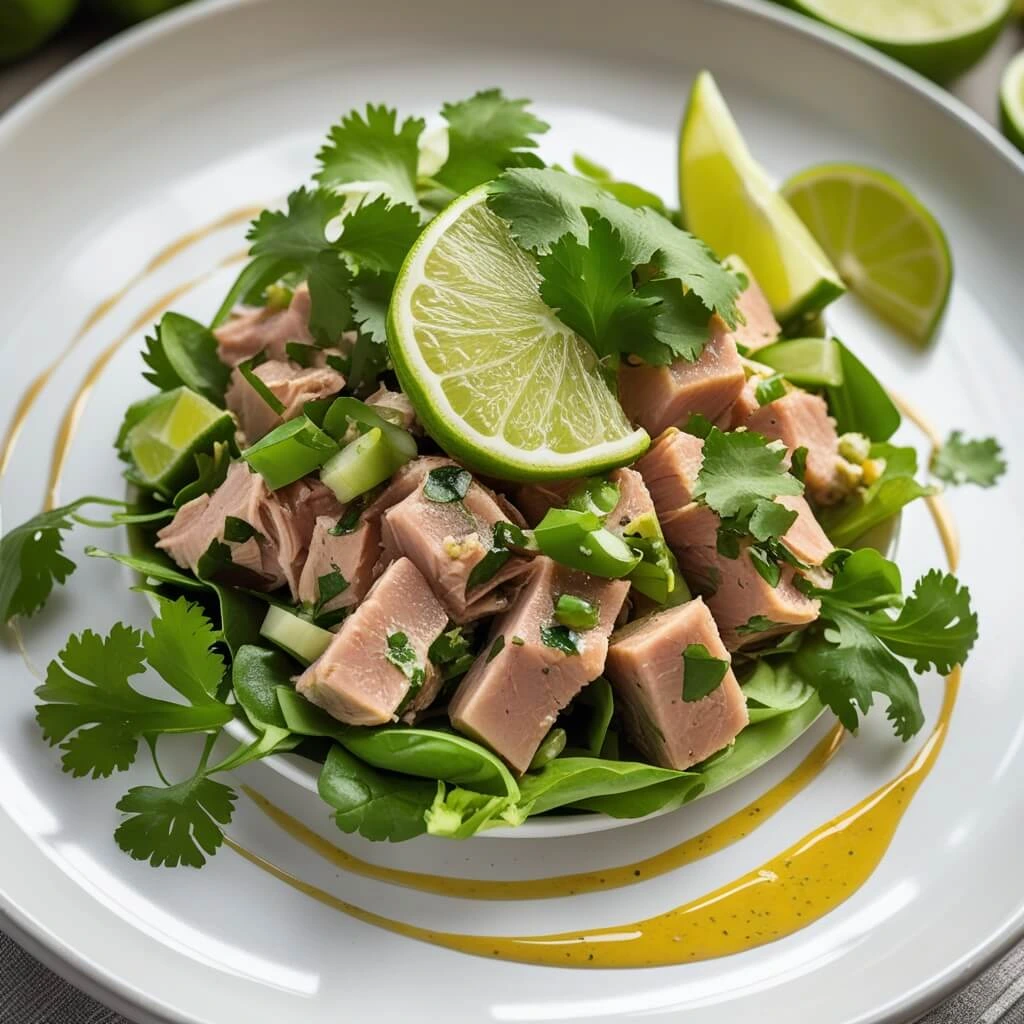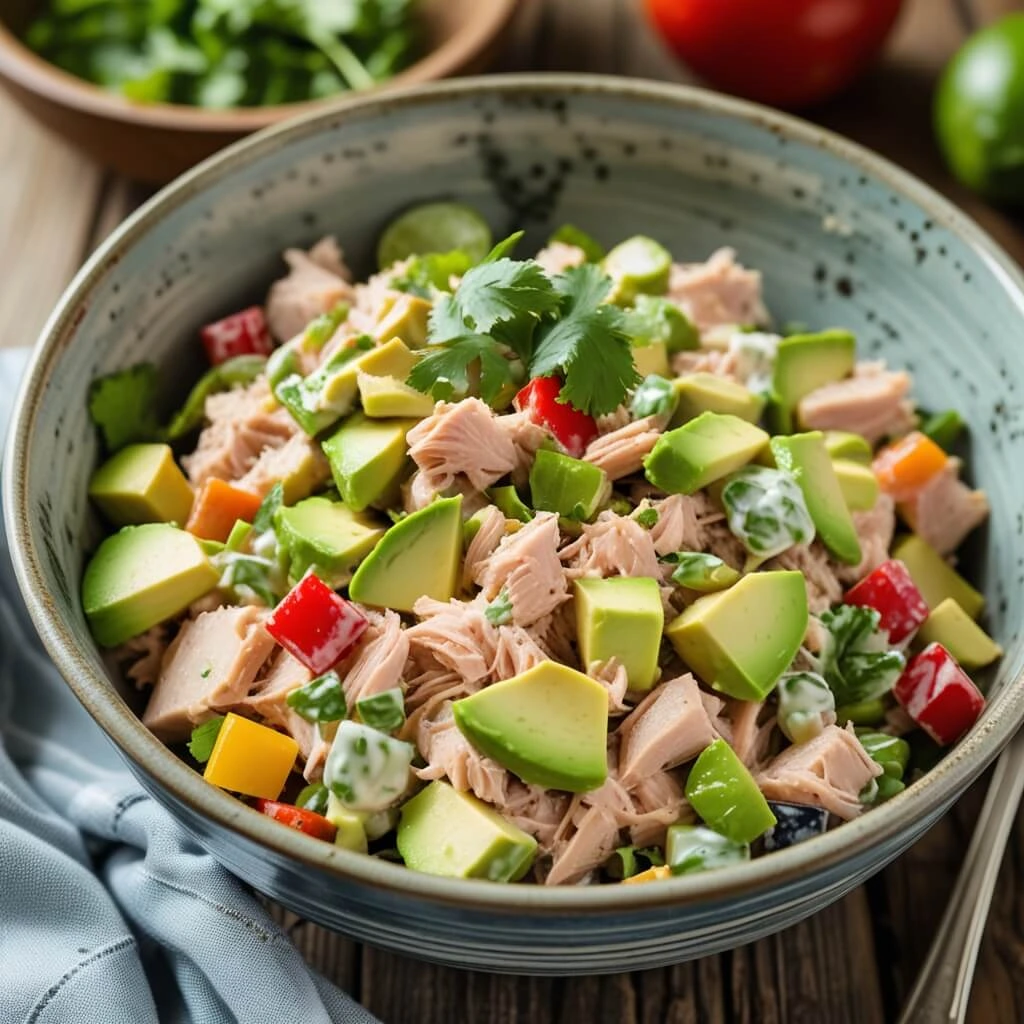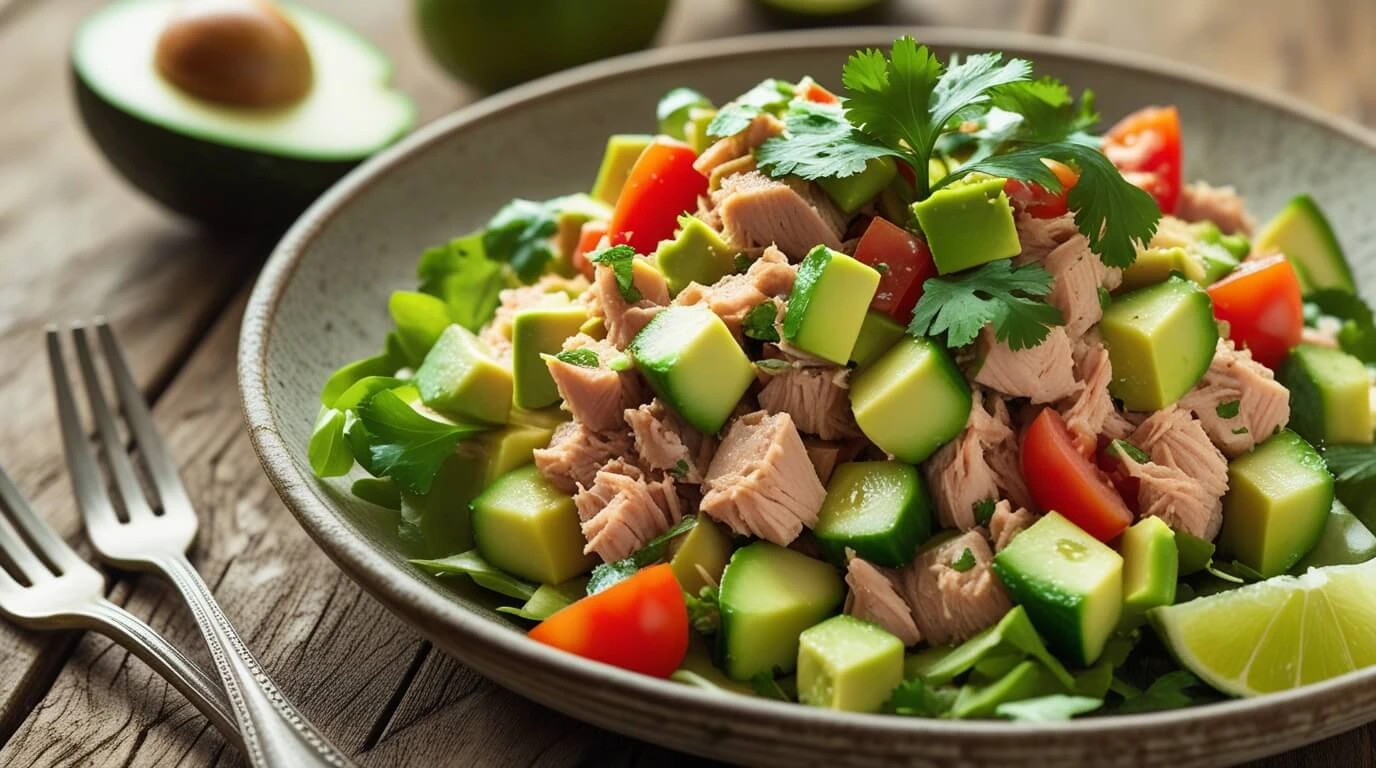Introduction
Why does restaurant tuna salad taste better? This question has crossed the minds of many tuna salad lovers, and for good reason. Tuna salad is a beloved dish, but when you taste a restaurant’s version, there’s something about it that sets it apart from homemade versions. Is it the ingredients? The preparation? Or perhaps the secret techniques used by chefs? In this article, we will explore why restaurant tuna salad tastes better than the typical homemade variety. We’ll take a deep dive into the ingredients, techniques, and special touches that make restaurant tuna salad so irresistible.

Table of Contents
The Key Ingredients That Make Restaurant Tuna Salad Taste Better
The key to any great dish is in the ingredients, and tuna salad is no exception. In many restaurants, chefs use carefully chosen ingredients to enhance flavor, texture, and visual appeal. These ingredients are integral to why restaurant tuna salad tastes better than your average homemade version. Let’s dive deeper into the components that make restaurant tuna salad stand out.
Fresh, High-Quality Tuna
One of the primary factors behind why restaurant tuna salad tastes better is the use of fresh, high-quality tuna. Many restaurants avoid canned tuna and instead opt for freshly grilled or seared tuna. This fresh tuna offers a firmer texture and a more delicate flavor that canned tuna simply cannot match. It also allows the chef to control the cooking process, ensuring that the tuna retains its moisture and tenderness, making it a highlight in the salad.
Canned tuna, while convenient, is often packed in oil or water, which can sometimes lead to a slightly mushy or overly salty texture. This is one reason why restaurant tuna salad tastes better. When you use fresh tuna, the flavors are more vibrant and natural, making each bite an experience.
High-Quality Mayonnaise and Dressing
Another ingredient that elevates restaurant tuna salad is the choice of mayonnaise. Restaurants tend to use high-quality mayonnaise that is rich and creamy, providing the perfect binding agent for the tuna and vegetables. Unlike mass-produced mayos, which can taste overly sweet or artificial, high-end mayonnaise adds a smooth texture and a more refined flavor to the salad.
In some cases, chefs may even prepare their own dressing from scratch, blending mayonnaise with mustard, lemon juice, and other secret ingredients. This type of dressing creates the perfect balance between richness and tang, further contributing to why restaurant tuna salad tastes better than homemade versions. The mayo helps to meld all of the ingredients together, creating a cohesive, flavorful dish.
The Role of Vegetables in Making Tuna Salad Taste Better
Vegetables are an essential part of any good tuna salad. They add both flavor and texture, and when prepared properly, they help elevate the overall taste of the dish. Restaurants understand the importance of vegetables in tuna salad, which is why they often use freshly chopped, crunchy vegetables that enhance the eating experience. This is another reason why restaurant tuna salad tastes better.
Crisp, Crunchy Vegetables
The vegetables used in restaurant tuna salad are often finely chopped to ensure that each bite contains a satisfying crunch. Celery, onions, and bell peppers are common choices because they add freshness and a delightful texture to the salad. The vegetables are carefully diced so that they complement the tuna rather than overpower it.
Restaurants often use vegetables that are in season to ensure maximum freshness, and they are added in just the right proportions. This attention to detail in choosing and preparing vegetables is why restaurant tuna salad tastes better. The crunch from the vegetables provides a great contrast to the creaminess of the mayo and the tenderness of the tuna.
Pickles and Capers
In addition to the basic vegetables, many restaurants add pickles or capers to their tuna salad. These ingredients bring a burst of flavor that cuts through the richness of the tuna and mayo. Pickles, with their vinegary tang, provide an excellent contrast to the smoothness of the tuna, while capers add a salty, briny punch that enhances the overall taste.
By using these flavorful add-ins, restaurants ensure that their tuna salad has a more complex and dynamic flavor profile, which is another reason why restaurant tuna salad tastes better.
The Secret to the Perfect Tuna Salad Dressing

Dressing is arguably one of the most important components of tuna salad. It not only ties all the ingredients together but also influences the overall flavor of the dish. The dressing used in restaurant tuna salads is often a key reason why restaurant tuna salad tastes better than homemade versions. Restaurants are experts at balancing the flavors in their dressings, creating the perfect combination of creamy, tangy, and savory notes.
A Balanced Flavor Profile
The key to why restaurant tuna salad tastes better lies in the balance of the dressing. A great tuna salad dressing typically combines mayonnaise, mustard, lemon juice, and sometimes a hint of vinegar. The mayo provides the creamy base, the mustard adds a touch of sharpness, the lemon juice brightens up the dish, and the vinegar gives it a subtle acidity that elevates the flavors.
Restaurants often use precise measurements to ensure that each component of the dressing is perfectly balanced. This careful approach is one of the reasons why restaurant tuna salad tastes better. The dressing brings all of the ingredients together, enhancing their flavors without overpowering them.
Creative Additions to Dressing
Restaurants often get creative with their tuna salad dressing by adding ingredients like Greek yogurt, Dijon mustard, or even a bit of honey. These additions can transform a standard dressing into something extraordinary. Greek yogurt, for example, adds a creamy, tangy note that complements the tuna, while Dijon mustard gives the dressing an extra kick.
By experimenting with these ingredients, restaurants create a unique dressing that enhances the overall flavor of the tuna salad. This creativity is a key factor in why restaurant tuna salad tastes better than most homemade versions.
Techniques Used in Restaurants to Make Tuna Salad Taste Better
The techniques employed by restaurants are just as important as the ingredients themselves when it comes to making tuna salad taste better. Professional chefs use specific methods that maximize the flavor and texture of each ingredient. From preparation to plating, every step is done with precision to ensure the salad is as delicious as possible.
Perfectly Flaking the Tuna
One of the techniques used by restaurants to ensure that tuna salad tastes better is the way the tuna is flaked. In restaurants, the tuna is usually flaked by hand, which preserves its texture and prevents it from becoming too mushy. By gently breaking the tuna into large flakes, chefs ensure that each bite has a satisfying, meaty texture.
This is an important step in making restaurant tuna salad taste better. Over-mixing or over-flaking the tuna can result in a mushy texture that doesn’t have the same appeal. Restaurants take the time to carefully flake the tuna to maintain its integrity, which contributes to the overall quality of the dish.
Letting the Salad Rest
Another technique that restaurants use is allowing the tuna salad to rest before serving. After the ingredients are mixed, the salad is typically refrigerated for at least an hour. This resting period allows the flavors to meld together and intensify. The tuna absorbs the flavors from the dressing and vegetables, resulting in a more flavorful and well-balanced salad.
By letting the salad rest, restaurants ensure that their tuna salad tastes even better. The flavors become more integrated, and the texture improves, making for a more satisfying dining experience.
Tips for Making Tuna Salad Like a Restaurant
If you’re wondering how to make your homemade tuna salad taste just like the one at your favorite restaurant, here are a few tips to get you started.
Choose Fresh Ingredients
As we’ve discussed, fresh ingredients are crucial to making tuna salad that tastes better. Opt for fresh tuna, high-quality mayo, and fresh vegetables whenever possible. Freshness plays a significant role in why restaurant tuna salad tastes better, so don’t skip this step.
Use a Balanced Dressing
The dressing is key to making your tuna salad taste like it came from a restaurant. Ensure that your dressing has a balance of creaminess, tanginess, and a hint of acidity. Experiment with different ingredients to find the perfect combination for your taste.
Pay Attention to Texture
The texture of your tuna salad is just as important as the flavor. Be sure to gently flake the tuna and chop the vegetables into small, uniform pieces. This will create a tuna salad that has the perfect balance of creaminess, crunch, and tenderness.
FAQs
Q: Why does restaurant tuna salad taste better than homemade versions?
A: Restaurant tuna salad typically uses fresh, high-quality tuna, carefully balanced dressings, and finely chopped vegetables, which all contribute to a superior taste and texture.
Q: What ingredients make tuna salad taste better?
A: The secret ingredients for better tuna salad include fresh tuna, high-quality mayonnaise, crunchy vegetables, and creative additions like pickles or capers.
Q: How can I make my tuna salad taste like the ones served in restaurants?
A: To make tuna salad taste like it’s from a restaurant, use fresh, high-quality ingredients, balance the flavors in the dressing, and pay attention to texture by gently flaking the tuna.
Conclusion

In conclusion, there are several factors that contribute to why restaurant tuna salad tastes better. From the use of fresh, high-quality ingredients to the perfect balance of flavors and textures, restaurants have perfected the art of making tuna salad. If you want to recreate this experience at home, focus on using fresh ingredients, making a balanced dressing, and paying attention to the texture of your tuna salad.
For a delicious recipe to try at home, visit our Mexican Tuna Salad Recipe.

